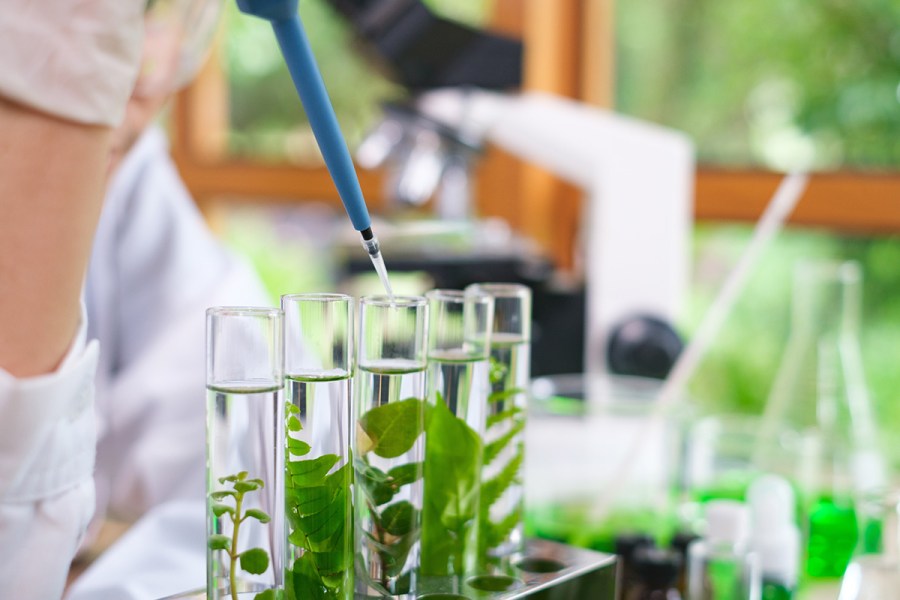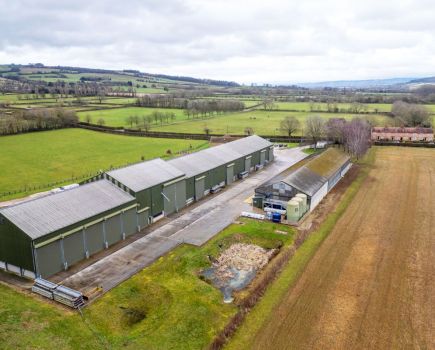Technology is advancing at an exponential rate and agriculture is coming along for the ride. CPM explores what agricultural biotech is and how it could shape the future of the industry.
“GM crops have been in the environment for a while now and despite early scaremongering, the planet is still functioning.” – PROFESSOR PAUL NICHOLSON
By Melanie Jenkins
Biotechnology, or biotech for short, is a field that combines biological processes and engineering science. It’s an area of research and development that offers the potential for significant scientific advancement with scope to reshape agriculture.
Some areas of plant breeding where this is already being realised at ‘muddy boots’ level is through improved disease and pest resistance, increased drought or flood tolerance and better nutrient use efficiency. There are already companies producing biofertilisers, crops able to be grown in high salt conditions, and others which provide added nutritional benefits when consumed. “What biotech is doing in every area, whether in therapeutics, agriculture or clean power generation, is creating extraordinary technologies developing at an exponential pace. Science fact increasingly looks like science fiction,” says Andrew Craig, author of Our Future is Biotech. “It might seem like hype, but we’re very likely to be on the cusp of a number of huge breakthroughs technologically.”
So what’s making advances in biotech possible? Moore’s Law is an observation that the number of transistors in an integrated circuit doubles around every two years. However, the term has become synonymous with a wider industry trend whereby the processing power and capability of technology increases on an exponential scale at a rapidly increasing pace.
Andrew sees this as a recognisable phenomenon in the advancements made in biotech, which at times might seem the realms of fantasy, but is in fact happening as much within agriculture as anywhere. “It’s an area that can be seen as brushing up against the limitations of known physics, but computer chips have become as much as 1Bn times more powerful in my lifetime,” he says.
Other factors such as Metcalfe’s Law, or the exponential effect of a growing network, is helping scientists advance research at an extraordinary rate, adds Andrew.
Related to all of this is the hot topic of AI, which has been a key focal point in mainstream press of late. As such, it may come of little surprise that its reach has extended as far as agriculture. “The application of AI and machine learning could advance the next generation of genome sequencing analysis, making it far more accessible and affordable,” he says. “We’ve already seen technology make this far more affordable for example, it cost $3Bn to sequence a single genome 20 years ago, when we did it for the first time – today it can be done in hours for as little as $100.”
EXPONENTIAL UNDERSTANDING
“Putting all of this together means we have a level of understanding of biology that’s unprecedented and developing exponentially. Through scientific collaboration, datasets can be interrogated while machine learning AI can be used to extrude substantive conclusions because without it the data is too sizeable and complicated to analyse,” he says.
But bring up technology-based genetic modification in conversation and the likelihood is there’ll still be those who blanch at the concept, whether they understand it or not, says Andrew. This is something he believes is entirely unjustified and has been propagated through bad press coverage and sensationalist approaches.
And with the more recent advances in gene editing technologies such as CRISPR, there remain communication issues whereby this technology hasn’t been well differentiated from genetic modification. The former involves the precise alteration of a living organism’s genome, and the latter usually consists of introducing foreign DNA into an organism.
In essence, gene editing simply speeds up a process that would have happened naturally or through traditional breeding techniques, but over a far longer period of time. “It’s one thing to understand the genome and another thing to be able to do things with it, but with CRISPR we can,” says Andrew.
While the UK government is still preparing to introduce legislation on the growing of gene-edited crops in England and Wales, the European Union has taken an about turn on its more cautious approach, voting on 7 February to lessen the regulatory oversight of gene-edited crops.
Other parts of the world, including the US, Brazil, Argentina,Australia, Canada and India, among many others, have been growing GM crops for years and all have either no restrictions or an approval on a case-by-case system in place for gene edited crops, according to the Global Gene Editing Regulation Tracker.
“Improved crops and yields are hopefully what we’ll see come out of gene editing and the hope is that in 3-5 years we could see significant advancements in what farmers could be able to grow,” he continues. Andrew observes that the increasing costs related with pesticides – both monetarily and environmentally – could drive innovation in this area with research scientists, innovative start-ups and larger chemical and breeding firms all looking to produce solutions to reduce reliance on these.
BIOREMEDIATION
“Advances in biotech will also come in the form of bioremediation. We know there are areas where soils are tired and depleted, but through the use of technologies alongside plants,fungiandbacteria,therecan be a step-change in the health and productivity of soils. We’ll be able to use microbes to clear up contaminants in both soils and water, for example.”
He also believes there’ll be further progression in the use of biofuels which will advance through breakthroughs in genetics and genomics to become more energy dense, efficient and productive.
And with these technologies becoming increasingly cheaper to explore, their integration within the existing status
quo is likely to continue, he says.
“For perspective, in the mid-1990s the components in a single iPhone would have cost something like $100M dollars. If you’d said to someone that there’d be a day where there would be 7Bn smartphones in the world, they’d have argued that the economics could never work,but that is precisely what happened. So I think many of the technologies we’re seeing at the moment will follow a similarly exciting and surprising exponential trend.”
This article was taken from the latest issue of CPM.
For more articles like this, subscribe here.
Sign up for Crop Production Magazine’s FREE e-newsletter here.




